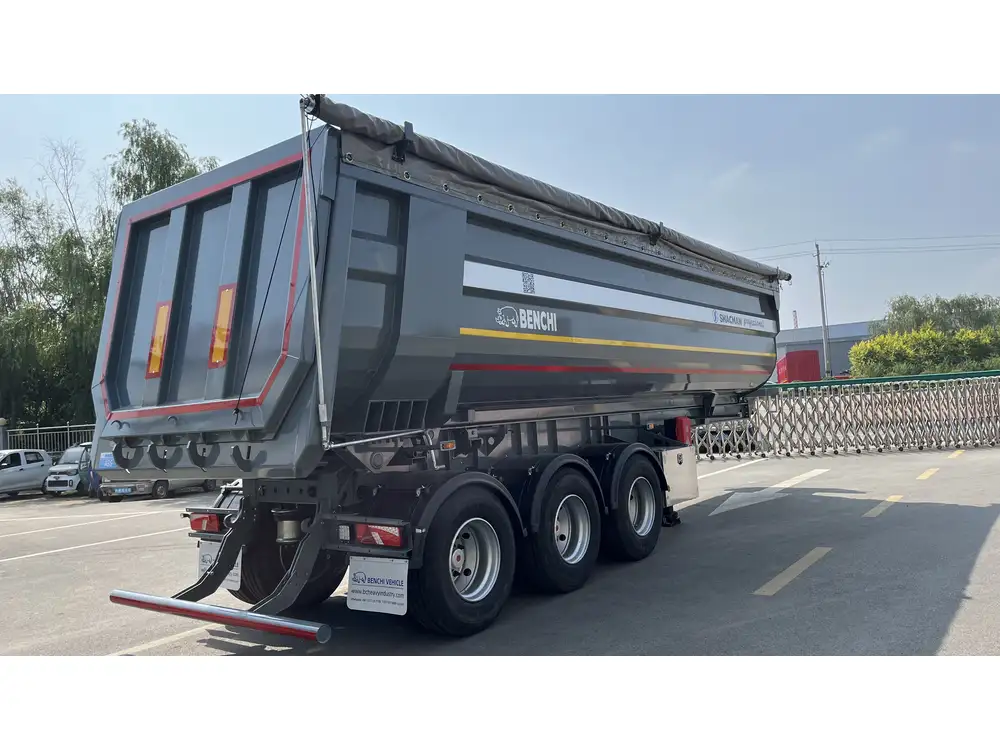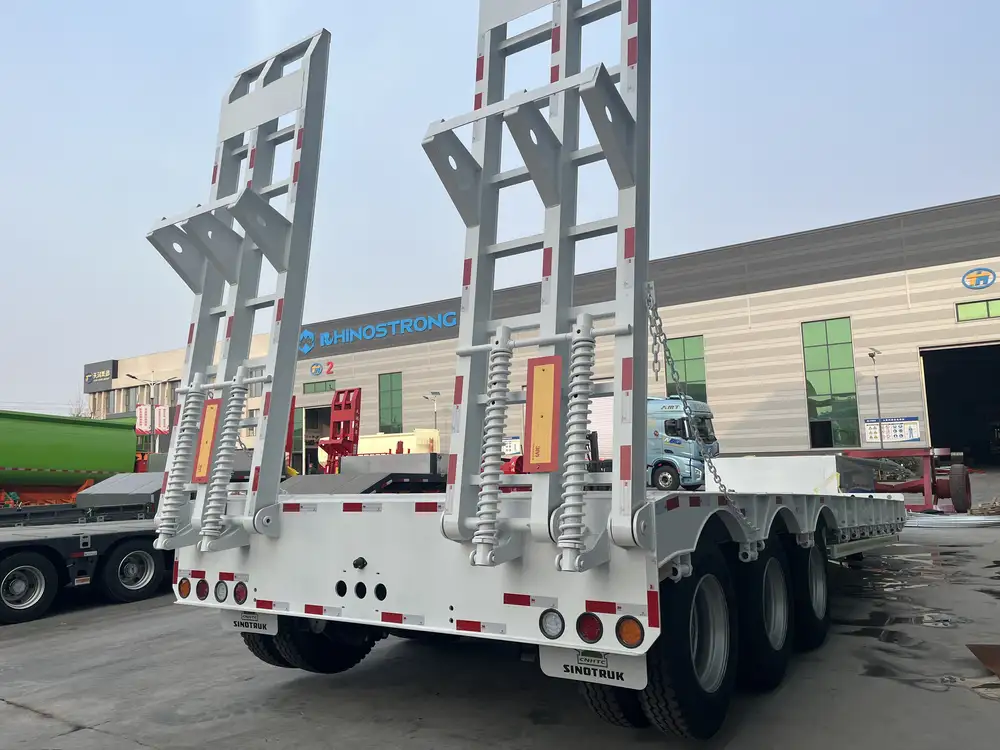Acquiring a semi-trailer license is an important step for anyone looking to drive large commercial vehicles. The process can be intricate, filled with specific regulations, requirements, and various nuances that need to be understood. In this comprehensive guide, we will delve into the essential components of obtaining a semi-trailer license, alongside tactics to navigate this multifaceted journey successfully.
Understanding the Semi-Trailer License
A semi-trailer license, typically categorized under a Commercial Driver’s License (CDL), allows individuals to operate combination vehicles that exceed certain weight thresholds. Here we break down the classifications.
Types of Semi-Trailer Licenses
| License Type | Description |
|---|---|
| Class A | Authorizes the operation of combination vehicles with a gross vehicle weight rating (GVWR) of 26,001 pounds or more. |
| Class B | Permits the operation of single vehicles weighing over 26,000 pounds, but not necessarily a combination vehicle. |
| Class C | Enables driving vehicles for transporting hazardous materials or designed to carry 16 or more passengers. |
The focus of this article is primarily on Class A licenses since they encompass the operation of semi-trailers and large trucks that are crucial within the transportation industry.

Prerequisites for Obtaining a Semi-Trailer License
Before navigating the complex process of obtaining a semi-trailer license, several prerequisites must be fulfilled.
Age Requirement
- Minimum Age: Applicants must be at least 21 years old to drive interstate; however, many states issue a Inter-state CDL to individuals aged 18 to 20 for intrastate operations.
Mandatory Documentation
Individuals seeking a CDL must present various documents, including:
- Proof of Identity: A government-issued ID (driver’s license or passport) is essential.
- Social Security Number: A valid SSN must be provided, confirming identity.
- Medical Certification: Acquire a DOT Medical Card from a certified medical examiner.
- Proof of Residence: Documentation proving residence in the state of application is often required.

Knowledge of Requirements
Understanding your state’s specific requirements can save time and effort. Each state has its own distinct regulations regarding the licensing process and mandatory tests.
Steps to Get Your Semi-Trailer License
The process of obtaining a semi-trailer license is systematic and requires diligent preparation. Below is a structured outline detailing each significant process step.
Step 1: Conduct Preliminary Research
Conduct research to familiarize yourself with your state’s specific requirements. Resources such as your state’s Department of Motor Vehicles (DMV) or equivalent agency’s website can be incredibly useful.

Step 2: Obtain a Commercial Learner’s Permit (CLP)
Before you can pursue a semi-trailer license, you must first secure a CLP.
- Written Test: You will need to pass a written knowledge test, which assesses your understanding of road safety, vehicle operation, and state-specific traffic laws.
- Fees: Pay any applicable fees associated with obtaining the CLP.
Step 3: Enroll in a Training Program
While not legally required, enrolling in a reputable truck driving school can vastly enhance your likelihood of success.
Advantages of Formal Training:
- Hands-On Experience: Instructors provide practical, hands-on training in operating a semi-trailer.
- Expert Guidance: Educators can help clarify complex regulations and techniques for maneuvering large vehicles.
Step 4: Schedule a Road Skills Test
Once you feel prepared and have met all preliminary requirements, the next step involves scheduling a road skills test.
| Component | Specifics |
|---|---|
| Pre-Trip Inspection | Demonstrate knowledge of vehicle inspection. |
| Basic Control Skills | Execute basic maneuvers in a controlled environment. |
| Road Test | Navigate real-world driving scenarios. |

Step 5: Obtain Your Semi-Trailer License
If successful in your road test, you will be issued a Class A CDL. Remember to check for any additional endorsements you might require, such as:
- Hazardous Materials (H) Endorsement
- Tanker (N) Endorsement
- Double/Triple Trailers (T) Endorsement
Maintaining Your License
Once you have obtained your semi-trailer license, maintaining compliance with regulations is critical.
Regular Renewals
CDLs must be renewed periodically, typically every 5 years. Ensure timely completion of renewal applications and fees, which may include:
- Vision testing
- Continued education courses (if applicable)

Importance of Safe Driving Records
Maintain a clean driving record to avoid penalties and to ensure continued eligibility for your license. Accumulating violations can put your license at risk.
Additional Considerations
Regularly review your state’s updates on commercial driving laws. Regulations can change, and staying informed will help maintain compliance.
Troubleshooting Common Issues
As with any licensing process, applicants might face hurdles. Here are some common issues and strategies to overcome them.

Difficulty Passing Tests
- Test Anxiety: Consider practicing relaxation techniques prior to tests.
- Study Groups: Collaborate with peers preparing for the same tests to enhance retention.
Delays in Application Processing
If you experience delays in receiving your license:
- Contact the DMV: Inquire professionally about the status of your application.
- Check Documentation: Ensure that all documents were submitted correctly.
Denied Applications
If your application gets denied, it’s crucial to:
- Understand the denial reason: Reviewing the feedback will help you address the issue.
- Reapply once issues are resolved, ensuring to address all previous concerns.

Conclusion
Acquiring a semi-trailer license is undoubtedly a multifaceted process, requiring attention to detail, adherence to regulations, and ongoing education. By navigating through the steps outlined in this guide—with thorough research, preparation, and practical training—prospective drivers can successfully obtain their licenses and embark on a rewarding career in the transportation industry.
Continually maintaining your license through safe driving practices and staying updated on state regulations will further enhance your success in this field. With diligence, the road ahead promises to be both exciting and fulfilling, paving the way for a prosperous future in commercial driving.



